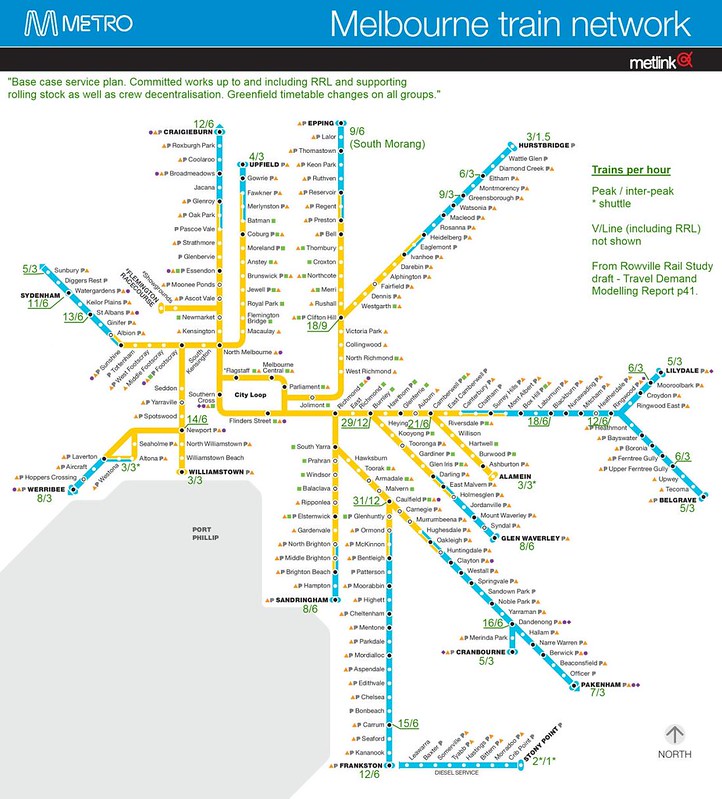A future rail service plan hidden away in a Rowville Rail study technical document has been uncovered by the Public Transport Users Association (PTUA).
The plan is contained in Travel Demand Modelling Draft Report for the Rowville Rail Study[1], and although it emphasises that the plan does “not necessarily represent the actual planned services”, PTUA President Daniel Bowen said that for the first time it gave the public a glimpse of what was planned for the future operation of their rail network.
The plan was based on the completion of the Regional Rail Link project in Melbourne’s west, and made the assumption that there would be enough trains to run services more frequently.
“The good news is the plan does include services at least every ten minutes all day on most lines. If implemented, this will make a huge difference to travel around Melbourne, making it easier to get around much of the city without long waits or relying on timetables”, said Mr Bowen.
“The bad news is that some lines miss out, including the Hurstbridge line, one of Melbourne’s busiest, the Upfield line, the Alamein line, and the Altona and Werribee lines beyond Newport.
“This is in part due to single track sections on those lines, but it’s unclear why they wouldn’t at least run frequent trains on the already duplicated parts of the line. Of course, in the longer term, single track sections need to be duplicated. Without frequent services, public transport cannot be competitive with car travel.”
Mr Bowen said that during peak hour, the plan forecast increases on most lines, including a 50% increase in Metro train services from the northern and western suburbs, a 20% increase of trains through Caulfield, and a 38% increase in trains through Clifton Hill.
“Obviously growth in peak-hour services is needed to help cut overcrowding. The question is, can they squeeze all of the capacity out of the network before they embark on huge, incredibly expensive infrastructure projects like new rail tunnels?”
The plan also for the first time reveals operating plans on the new Regional Rail Link line, currently under construction through
Melbourne’s west. It shows eight trains per hour on the Geelong line in peak, with half of those serving the new Wyndham Vale and Tarneit stations.
During off-peak, there would be trains every 15 minutes on the Geelong line, all stopping at Wyndham Vale and Tarneit.
Other regional lines would remain mostly hourly during off-peak, though trains from Melton would run every half-hour.
Mr Bowen said the establishment of Public Transport Victoria to plan and manage the network is an opportunity to make public transport planning more open and accountable, and the rail operating plan was a perfect example of this.
“Instead of it slipping out accidentally as part of a rail line study, this is precisely the type of document that should be put out before the public so they can see it and comment on it. It’s tax payers’ funds paying for all this, and the community should be able to have their say”, Mr Bowen concluded.
(Note: the above map annotations were prepared by PTUA, as an interpretation of the Rowville study notes.)
* * *
[1] http://www.rowvillerailstudy.com.au/publications/
Travel Demand Modelling Draft Report, page 41
Page 42 shows a plan that includes the proposed Rowville rail line.
Page 43 shows a plan that includes the proposed Melbourne Metro tunnel, and duplication/electrification to Melton.


